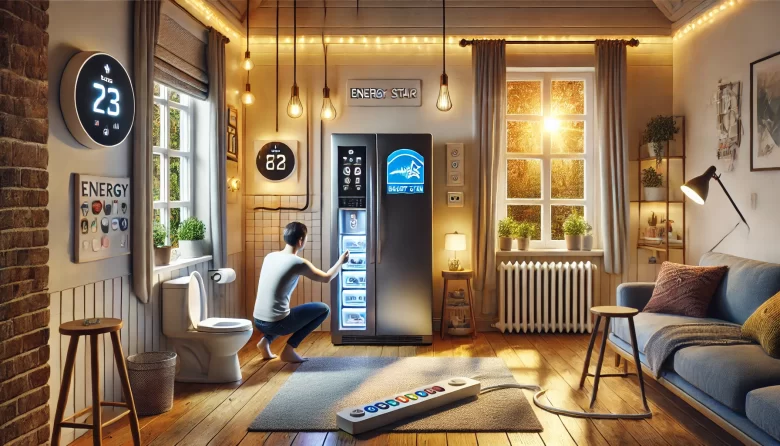Managing household expenses can often feel overwhelming, especially when utility bills start to pile up. From electricity and water to gas and internet, these recurring costs can eat into your budget if not monitored. The good news is that there are several practical and easy ways to reduce your monthly utility bills without sacrificing comfort. In this guide, we’ll explore smart strategies that you can start using today to lower your costs and take control of your household spending.
Understand Your Current Utility Usage
Before you start cutting costs, you need to understand where your money is going. Take a close look at your monthly utility bills from the past 3 to 6 months. Identify patterns in your usage, such as seasonal spikes or unusually high bills. Knowing what you’re spending on each utility will help you determine where you can save the most.
Switch to Energy-Efficient Appliances
Old appliances consume more energy than newer, energy-efficient models. If your refrigerator, washing machine, or air conditioner is over 10 years old, it might be time to replace them. Look for ENERGY STAR-rated appliances—they’re designed to use less energy and water while delivering excellent performance.
Even though there’s an upfront cost, energy-efficient appliances can save you hundreds of dollars over their lifetime.
Seal Drafts and Insulate Your Home
Heating and cooling are typically the largest utility expenses in a household. If your home isn’t properly insulated or if windows and doors have gaps, you’re likely wasting energy. Here are some simple ways to improve insulation:
- Install weather stripping around doors and windows
- Use caulk to seal cracks and leaks
- Add insulation to your attic and walls
- Use draft stoppers under doors
By keeping warm air in during winter and hot air out during summer, your HVAC system won’t have to work as hard, saving you money in the long run.
Use a Programmable Thermostat
Heating and cooling can be optimized with a programmable thermostat. These devices automatically adjust the temperature based on your schedule. For example, you can set the thermostat to lower the temperature when you’re not at home or asleep.
According to the U.S. Department of Energy, homeowners can save up to 10% a year on heating and cooling by using a programmable thermostat effectively.
Turn Off Lights and Unplug Electronics
It might seem like a small thing, but leaving lights and electronics on when not in use adds up. Make it a habit to:
- Turn off lights when leaving a room
- Unplug chargers, toasters, and devices when not in use
- Use power strips to easily switch off multiple devices at once
Also, consider switching to LED light bulbs. They use at least 75% less energy than traditional incandescent bulbs and last up to 25 times longer.
Save Water with Low-Flow Fixtures
Water bills can be significantly reduced by switching to low-flow fixtures. These devices use less water without compromising performance. Install low-flow showerheads, faucets, and toilets to reduce your consumption.
Additionally, you can:
- Fix leaks quickly—a dripping faucet can waste over 3,000 gallons per year
- Only run dishwashers and washing machines with full loads
- Limit lawn watering and water during early morning or evening hours to reduce evaporation
Opt for Budget Billing or Payment Plans
Some utility companies offer budget billing plans that spread your payments evenly over the year. This can help you avoid seasonal spikes, making it easier to plan your finances.
You can also ask your provider if they offer discounts for early payment or paperless billing.
Be Mindful of Peak Hours
Many electricity providers charge more during peak usage hours. Check with your utility company to find out when these peak times occur and try to limit your energy use during those hours.
For example, run your dishwasher or do laundry in the early morning or late at night to take advantage of lower rates.
Switch to Renewable Energy (If Available)
If your area offers community solar programs or green energy plans, consider signing up. While not always cheaper upfront, many programs offer incentives or long-term savings. Plus, it’s a sustainable choice that reduces your carbon footprint.
Audit Your Utilities Annually
Once a year, take time to review all your utility services. You might find you’re paying for services you no longer use or that better plans are available. Consider:
- Comparing internet and phone plans
- Evaluating your cable or streaming subscriptions
- Reviewing your electricity and gas suppliers for better rates
Staying proactive can ensure you’re always getting the best deal.
Final Thoughts: Small Changes, Big Savings
Cutting utility costs doesn’t require major lifestyle changes. By being mindful of your usage, investing in efficiency, and staying informed, you can make a significant impact on your monthly bills. Even small changes—like turning off lights, unplugging devices, or using cold water for laundry—can add up to big savings over time.
Take action today with a few of these tips and you’ll likely see a noticeable difference in your next bill. Saving money on utilities isn’t just good for your wallet—it’s good for the planet too.




